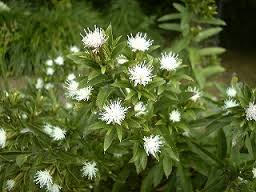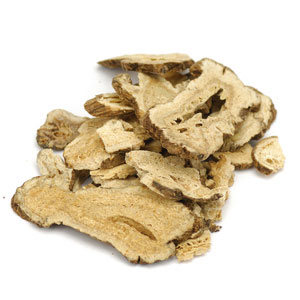Diaphoretic.[3] Lowers blood
sugar.[3]
- Epigastric fullness and discomfort, reduced appetite, vvomiting and/or diarrhea
due to Dampness obstructing the middle Burner. Used with
Magnolia
officinalis- Hou po.
- Distention, discomfort, and pain in the chest, epigastrium and abdomen due to
Qi obstruction and Dampness, with
Cyperus rotundus-
Xiang fu.
- Diarrhea, especially due to Summerheat with Dampness, with
Lonicera
japonica- Jin yin hua.
- Damp Warm-febrile diseases characterized by fever, produse sweating, and generalized
body aches, with
Calcium sulphate- Shi gao.
- Pain, swelling, and weakness of the lower extermities or skin lesion due to
Wind Dampness, with
Phellodendron chinense-
Huang bai.
- Cataracts, glaucoma, and night blindness, with
Sesamum
indicum- Hei zhi ma.
[1] Barefoot Doctor's Manual- 1977 Prepared
by the Revolutionary Health Committee of Hunan Province. Original Chinese manual-
Victor W. Sidel. Originally published by Dr Joseph Quin and the Fogarty International
centre, Bethdesda (1974). Madrona Publishers Seattle Washington ISBN 0-914842-52-8
[2] A Complete English Dictionary of Medicinal Terms in Chinese Acupuncture
and Herbalism 1981- Henry Lu Chinese Foundations of Natural Health- The Academy
of Oriental Heritage, Vancouver, Canada.
[3] Translation notes from Gary Seiford and Hocu Huhn- NSW College of Natural
Therapies. Sydney Australia (1982).
[4]
itmonline.org
[5] Chinese Herbal Medicine Materia Medica- Dan Bensky and Andrew Gamble- Eastland
Press 1986 Seattle Washington ISBN 0-939616-15-7
Images
1.
evidencebasednaturalhealth.weebly.com
2.
plumdragonherbs.com Bai zhu and Cang zhu-
both are atractylodes and fortify the Spleen and dry Dampness.
[2]
Bai zhu- slightly acrid,
bitter but not very stong. Works to tonify and strengthen Spleen.
[1]
Cang zhu- flavor more acrid- more into muscles, more for drying moisture,
not very tonifying.
[1] However,
Cang zhu is aromatic, bitter, and warm and has a dry and harsh nature. It upbears
yang, dissipates depression, and dries dampness. It has a stronger upbearing
and dissipating action than baizhu, but its ability to fortify the spleen, supplement
qi, and engender blood is weaker.
[2]
References
[1] Translation notes from Gary Seiford and Hocu Huhn- NSW College of Natural
Therapies. Sydney Australia (1982).
[2]
itmonline.org
Volatile oil, making up 3.5-7%
of the dried rhizome, with atractylodin, β-eudesmol, hinesol, elemol, atractylone,
and β-selinene.
atractylol.
[1]
A. lancea- Atractylol, hinesol,
b-eudesmol.
[2]
A. chnensis- atractylone, hinesol,
b-eudesmol.
[2]
References
[1]
itmonline.org
[2] Chinese Herbal Medicine Materia Medica- Dan Bensky and Andrew Gamble- Eastland
Press 1986 Seattle Washington ISBN 0-939616-15-7
 Atractylodes lancea. 苍
术
Cāng zhú
Black atractylodes rhizome
Family: Asteraceae
Atractylodes lancea. 苍
术
Cāng zhú
Black atractylodes rhizome
Family: Asteraceae
